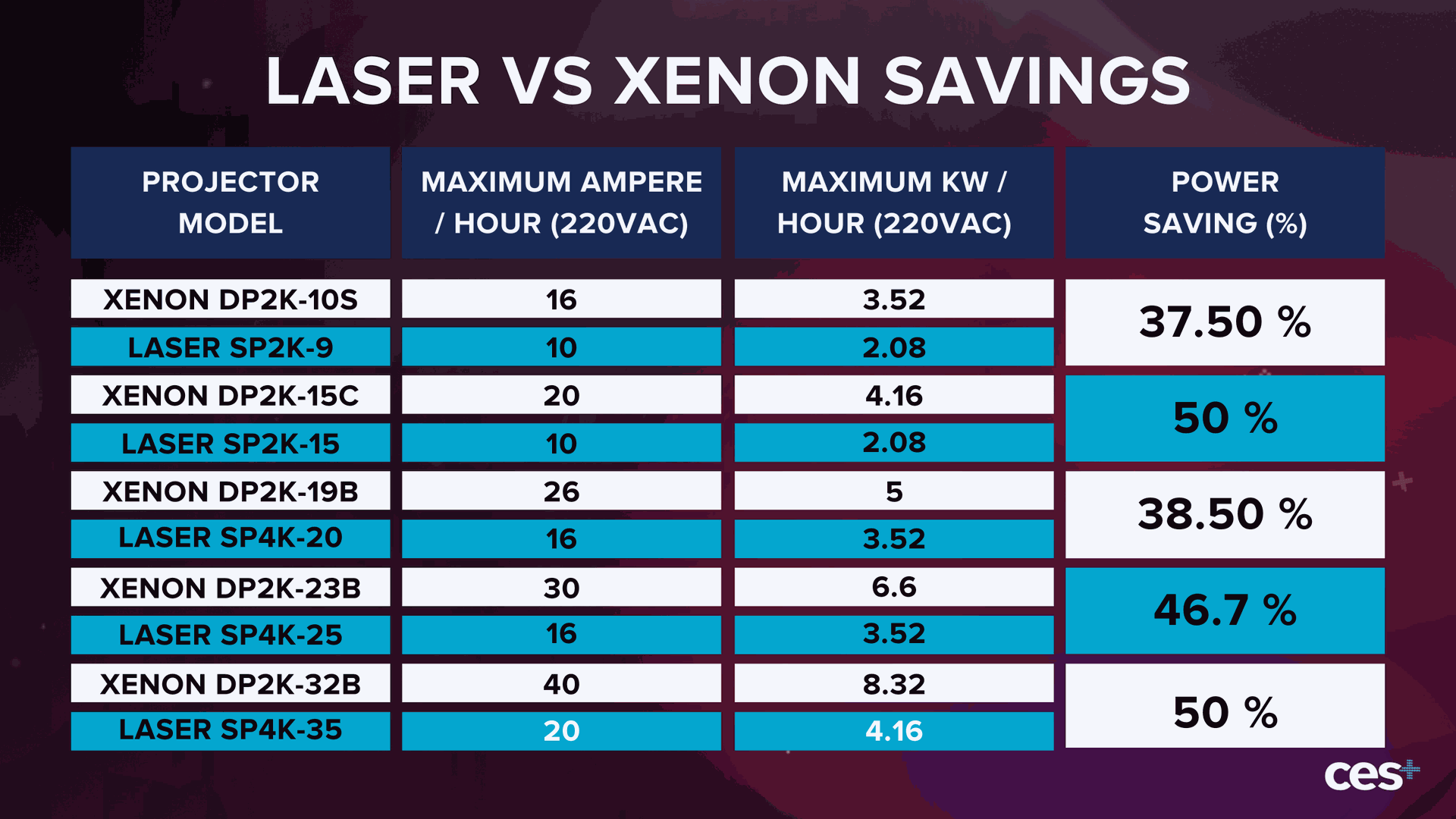You run your business like a marathon, not a sprint. Larger long-range savings usually trump shorter cost benefits.
Enter the laser vs. xenon lamp projection argument.
From basically the beginning, lamps were the traditional go-to light source for cinemas. Then, less than 20 years ago, solid-state projection light sources such as lasers took the industry by storm. Changing the light source in a projector from lamps to laser diodes brings with it many advantages for the professional AV market.
The cost of worldwide energy use has increased significantly the past decade, making many cinema operators looking for ways to save energy consumption in order to be able to both bolster their bottom line, as well as reallocate energy cost savings to other areas in their business. This includes remodeling and growing their theaters by replacing projection, audio and automation equipment with the latest models that will both provide a better experience for their customers as well as save them money over the long haul.
Yes, laser projectors are more expensive than xenon lamp projectors, so let’s just get that out of the way. But let’s look at why laser projection is a long-term savings investment.
Unlike wine, projection equipment does not get better with age. Expect equipment failures when it more than 10 years old, and fixing some issues could be quite expensive. When a light engine fails in some projector models, the replacement part could cost between $10,000 and $25,000 long after the warranty has expired.
And, laser light sources don’t just last longer, their performance is also more consistent over time. Based simply on how they are designed, inevitably lamps will dim after a while, and laser-based systems offer more consistent brightness that decreases at a much slower pace. Lasers also guarantee more stable color rendition over their lifespan.
Also, if a lamp explodes, your projection is finished. If one of the laser diodes fail, which is highly unlikely, you still have the others which will form an image on the screen.
Then, on the top of the light engine issue, other expensive parts could fail since the projector has been running too many hours over a very long period of time.
Has this already happened to you, or have you been dreading the inevitable costs to fix your xenon-based equipment? If so, we recommend that it is time to think about replacing the projector with a newer laser model that fits your auditorium(s). This way, you are going to have a new projector with a 2-3 year warranty at a price not too far of the cost of the replacement parts explained above.
Other advantages besides the costs are the quality of the image and the lower costs on maintenance and consumables such as lamps, dust filters, etc. When combining these advantages along with annual energy savings, you will begin seeing a fatter bottom line sooner than later.
CES+ is here to help you plan for both the short and long term so your theatres are always ready to project the next movie on your schedule. CES+ provides industry best film and cinema equipment, including projectors, lamps, screens, audio, and supplies, as well as leading cinema management solutions so that your customers can always expect and receive an enjoyable experience.
Below, a spreadsheet that illustrates the energy consumption savings and an interactive map in which you can see savings per State in the US and per country in Latin America.

